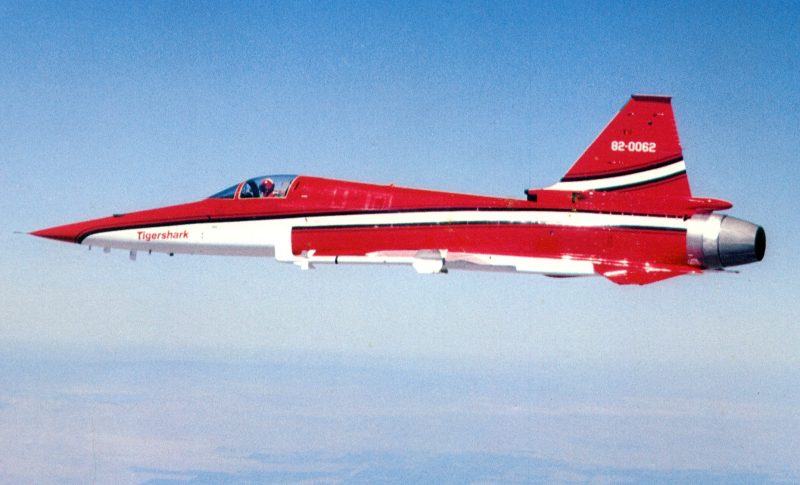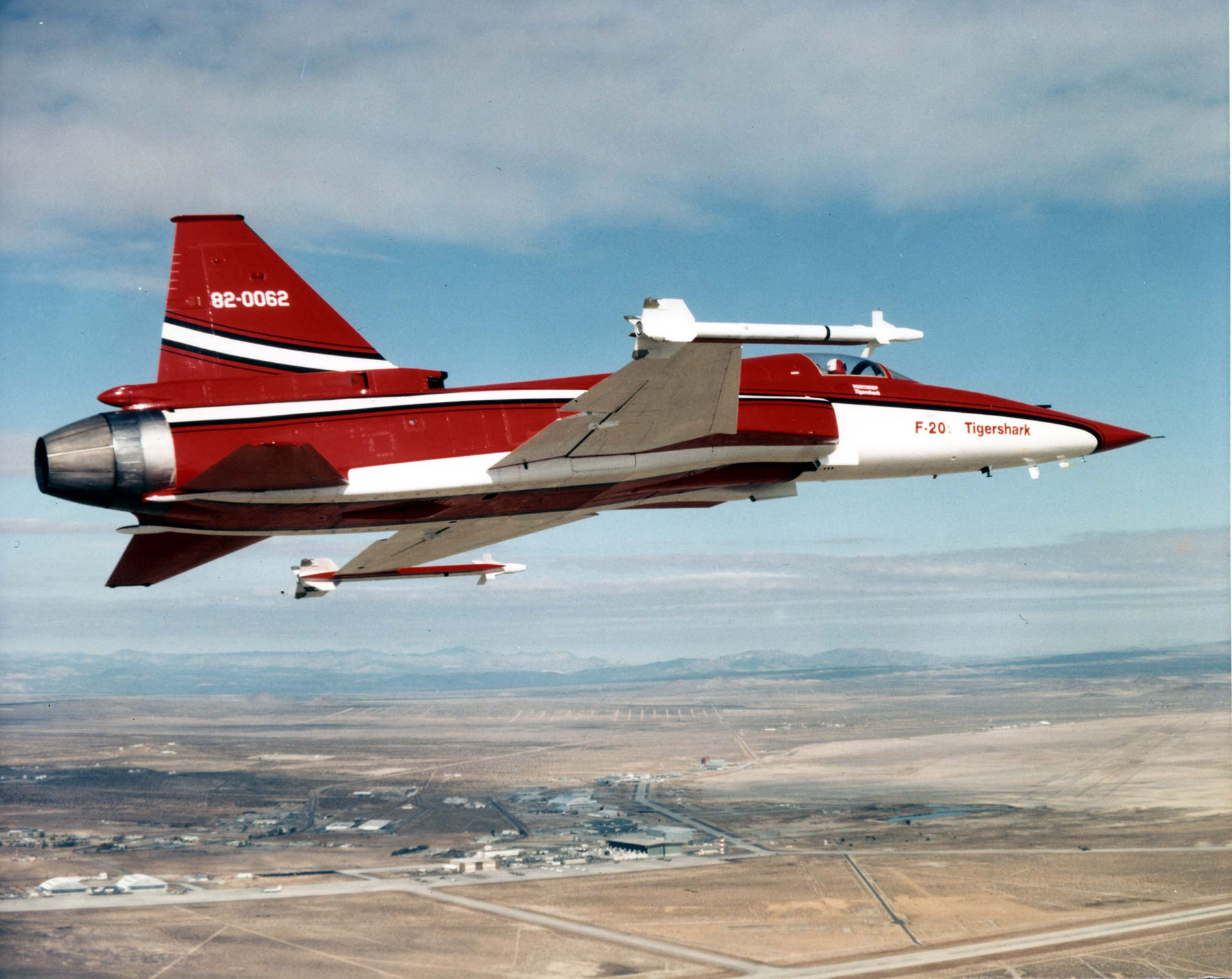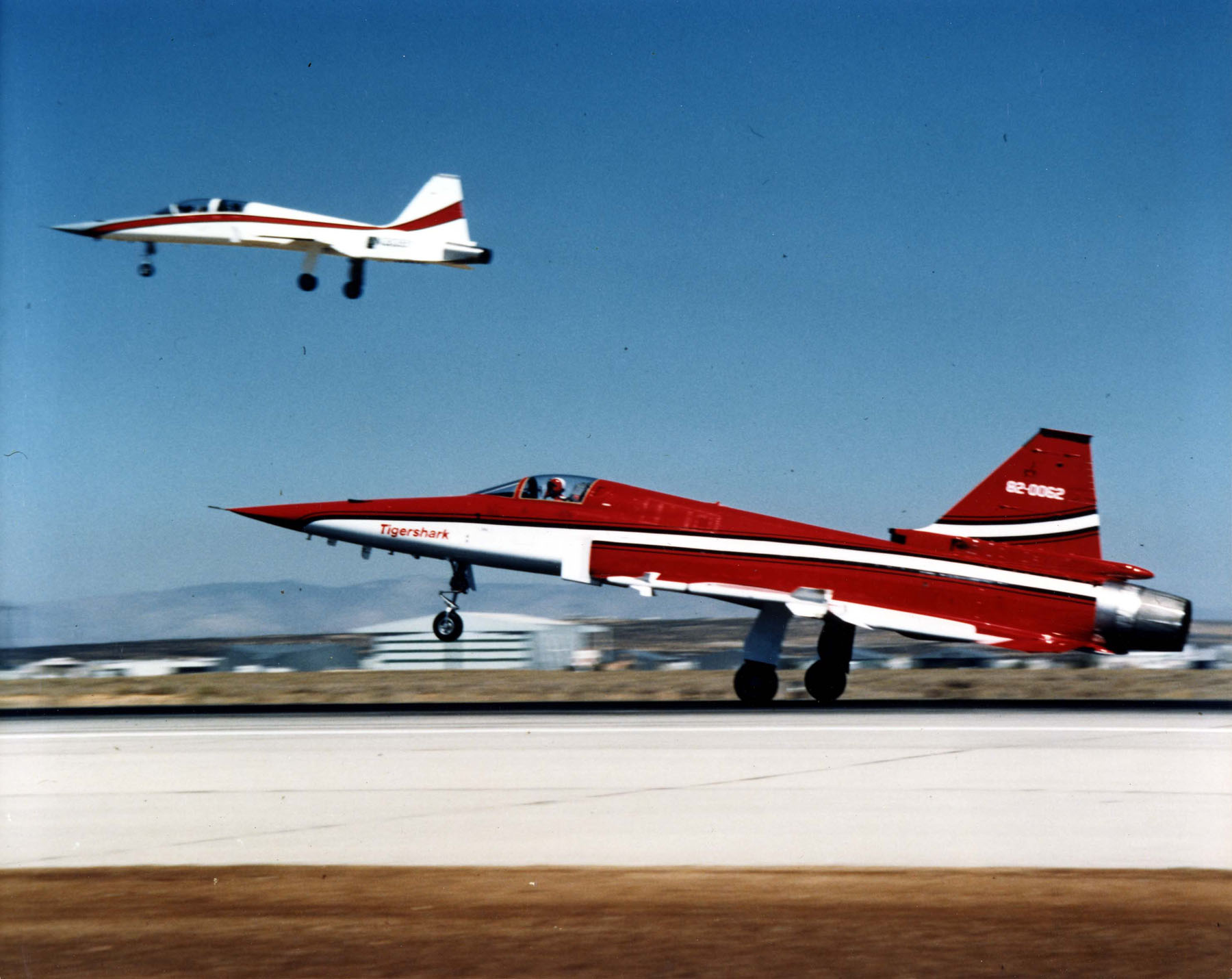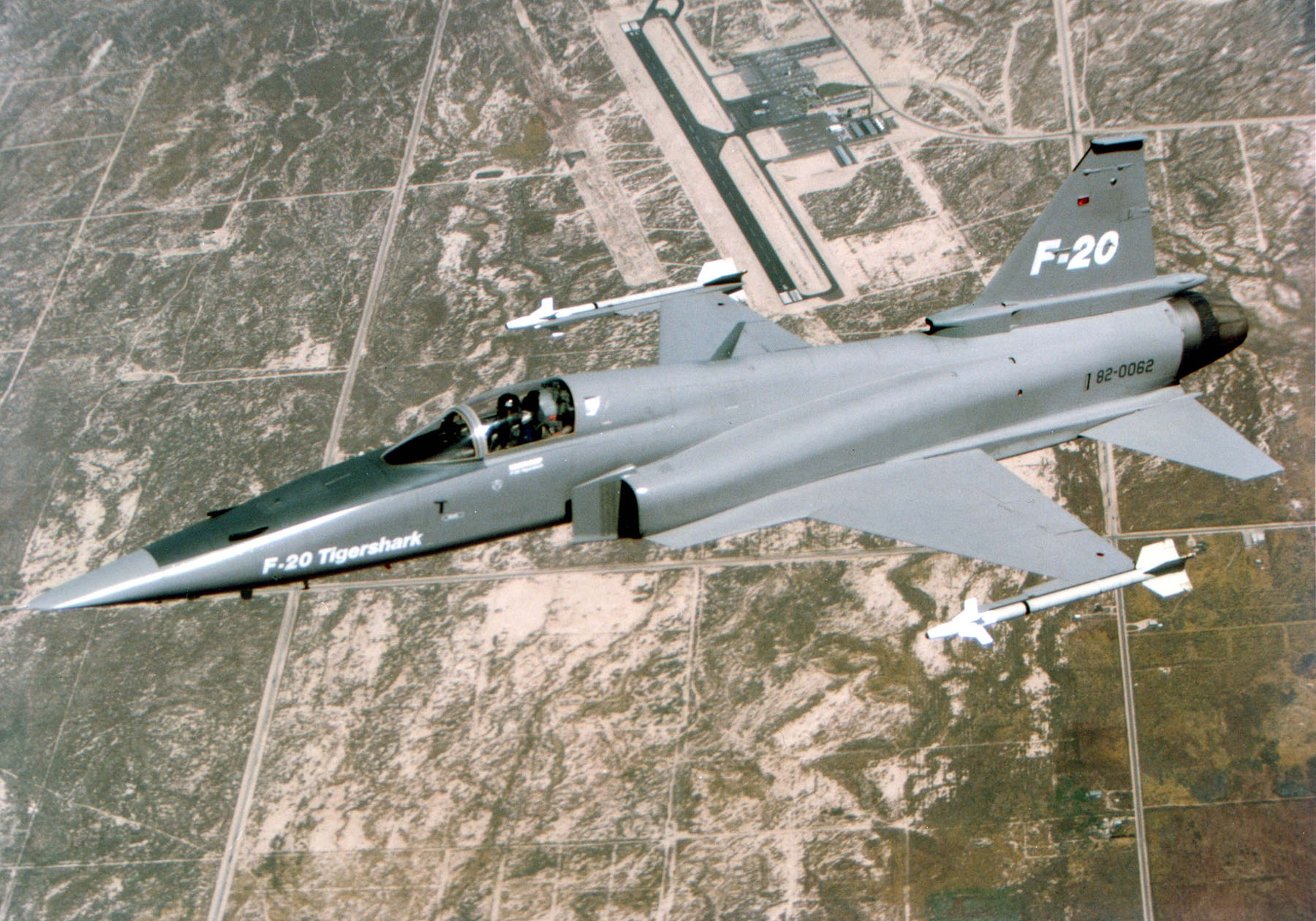
30 August 1982: Northrop test pilot Russell J. Scott made the first flight of the F-5G Tigershark prototype, N4416T, (Northrop serial number GG.1001) at Edwards Air Force Base, California. During the 40 minute flight the Tigershark, which would be re-designated F-20A two months later, reached an altitude of 40,000 feet and speed of Mach 1.04.
(Russ Scott, a former U.S. Air Force pilot, had been one of 11 pilots selected in 1961 to fly the Central Intelligence Agency’s ultrasecret Lockheed A-12 “Oxcart” Mach 3+ reconnaissance aircraft, though he left the program before the A-12 became operational.)


Changing political administrations restricted U.S. export policies and the projected sales of the F-5G, now designated F-20A, did not materialize. The fighter competed against the General Dynamics F-16 Fighting Falcon for an Air Force contract. The F-20A was considered to be as good, and in some ways, superior to the F-16. It was also less expensive. Other factors, though, resulted in the order for the General Dynamics fighter.

Developed from the earlier F-5E Tiger II, the F-5G/F-20A Tigershark was a Mach 2+ single-seat, single-engine, light-weight fighter. It was 46 feet, 6 inches (14.173 meters) long, with a wingspan of 26 feet, 8 inches (8.128 meters) with launch rails, and overall height of 13 feet, 10 inches (4.216 meters). The F-20A had an empty weight of 11,220 pounds (5,089 kilograms) and maximum takeoff weight of 26,544 pounds (12,040 kilograms).

From a cold start, the prototype fighter could climb to 34,000 feet (10,363 meters) in 2½ minutes. It could accelerate from 0.3 mach to 0.9 Mach in 27 seconds. The F-20A had a maximum speed of Mach 2.1 at 36,000 feet (10,973 meters)—1,387 miles per hour (2,232 kilometers per hour). Its service ceiling was 55,000 feet (16,764 meters). The maximum range with external tanks was 1,715 miles (2,760 kilometers).
The Tigershark’s armament consisted of two Pontiac M39A2 20mm autocannon with 280 rounds of ammunition per gun, and two AIM-9 Sidewinder air-to-air missiles carried on the wingtips.
Only three F-20As were built. N4416T (82-0062) crashed during a demonstration flight at Suwon Air Base, Republic of South Korea, 10 October 1984. The aircraft was destroyed and Northrop pilot Darrell E. Cornell was killed. The second F-20, N3986B, crashed at Goose Bay, Newfoundland, Canada, 14 May 1985, under similar circumstances, killing David Barnes. Investigations found that both pilots had lost consciousness due to high-G maneuvers. The third Northrop F-20A, N44671 (82-0064), is on display at the California Science Center, Exposition Park, Los Angeles, California.

© 2018, Bryan R. Swopes
The F-5G (F-20A) seemed to make so much sense to me at the time (as a high school student that devoured issues of Aviation Week and Space Technology). I recall Chuck Yeager was their ‘pitchman’ singing it’s praises; touting how the Tigershark would be off the ground and engaged with the bad guys- while the F-15 pilots would still be doing their pre-flight. It’s too bad that foreign Governments didn’t buy into it.
I have seen the remaining F-20 hanging in the California Science Center Lobby… pretty cool.
Note: In the bottom photo, the chase plane is not a T-38 Talon, but rather an F-5F- 2 seat variant of the Tiger!
EXCELLENT CATCH, KEN!!!!
One of the best planes we ever produced that the military did not buy. Would have made an excellent interceptor. Had a better angle of attack than the falcon and better maneuverability in close quarters. Granted the F-16 could carry more ordinance, but the shark had a much smaller radar signature. I asked a marine one Star way back in the 80s why we never purchased the aircraft and his answer stunned me, then made me think. He said; “politics.”.
Ordnance*
The initial competition against the F-20 was the F-16/79, an F-16 “dumbed down” with a GE J79 engine in place of the F100. It had inferior performance to the “real” airplane, but that was the purpose of the foreign sales program, to provide airplanes with lesser performance than the USAF types.This was part of the Carter administration strategy. When Reagan was elected, the philosophy was abandoned and front-line types were made available for sale to foreign “friendly” governments. Thus, the market for cheap/lightweight fighters went away and so did the F-20.